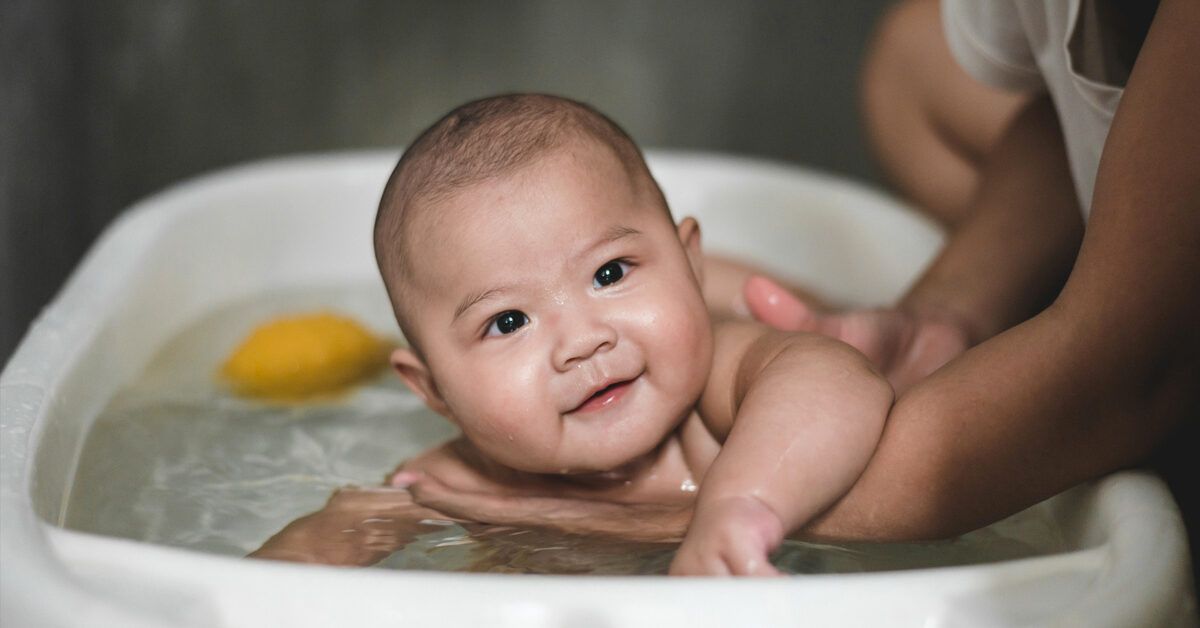Embracing the joy of a new arrival is a heartwarming journey, and as parents, nurturing the joy and welfare of your precious one is of utmost importance. Bathing your newborn might seem uncomplicated, yet it’s crucial to execute it with care, preserving their tender skin and overall health. Within this thorough handbook, we will expertly guide you through the process of safely bathing your precious bundle of joy, imparting invaluable wisdom to ensure an effortless and delightful experience.

Gather Your Supplies
Before you begin, ensure you have all the necessary supplies within arm’s reach. This will help prevent any accidents or uncomfortable situations during the bath. You’ll need:
A clean, soft towel
A gentle, hypoallergenic baby soap
A small baby tub or basin
A soft baby washcloth
A clean diaper
A fresh set of baby clothes
Set the Right Temperature
Prepare the infant’s bathing vessel with soothingly warm water, aiming for the optimal 98-100°F (37-38°C) temperature, as ascertained by a trusty baby bath thermometer. Adjust the warmth by blending cold water with hot if required. Finally, verify the comfort level with your wrist or elbow, ensuring it’s pleasantly warm without the risk of overheating.Be Mindful of the Timing
Babies, in their early months, don’t need daily baths; their delicate skin produces minimal oil, so it’s best to opt for 2-3 baths per week to prevent dryness and irritation.

Keep a Secure Grip
Ensuring your baby’s safety, always maintain a secure embrace as you introduce them to the water, cradling their delicate head and neck with one hand while your other hand lovingly guides them into the bath.
Start with a Sponge Bath
During the first few weeks, until the umbilical stump falls off and the circumcision (if applicable) heals, you should give your baby a sponge bath. Use a soft, damp washcloth to gently wipe their face, neck, arms, and diaper area. Be sure to clean all the creases and folds carefully, as these areas are prone to trapping moisture.
Gentle Cleansing
Once the umbilical stump has naturally detached and any circumcision has fully healed, you can shift to a standard bathing routine. Employ a gentle baby soap, applying it with a soft washcloth or your hand to gently cleanse your little one, beginning with their face and proceeding down to their neck, chest, arms, legs, and concluding with their diaper area. Exercise extra caution when cleaning around their delicate eyes, nose, and ears.
Rinse Thoroughly
Make sure to rinse your baby thoroughly to remove any soap residue. Use a clean washcloth and fresh water to rinse their body and avoid using soap on their face during this step.
Dry and Dress Your Baby
Tenderly scoop your little one from the water’s embrace and cocoon them in a plush, spotless towel. Tenderly dab away moisture, ensuring their tender skin is unharmed. If you wish, you can caress them with a gentle, hypoallergenic baby lotion. Ultimately, swaddle your precious bundle in fresh, crisp attire, and remember to snugly secure a pristine diaper.
Conclusion
Caring for your newborn through their first bath is an intimate journey where love and gentle attention merge to ensure their hygiene and comfort, forging a unique bond between you both, so cherish this precious moment.
Read More:- Calendula Flower: A Flowing Plant Aiding In Restoring Skin Health!
Read More:-Exploring the Multifaceted World of Tea: Unearthing Its Unexpected Effects
